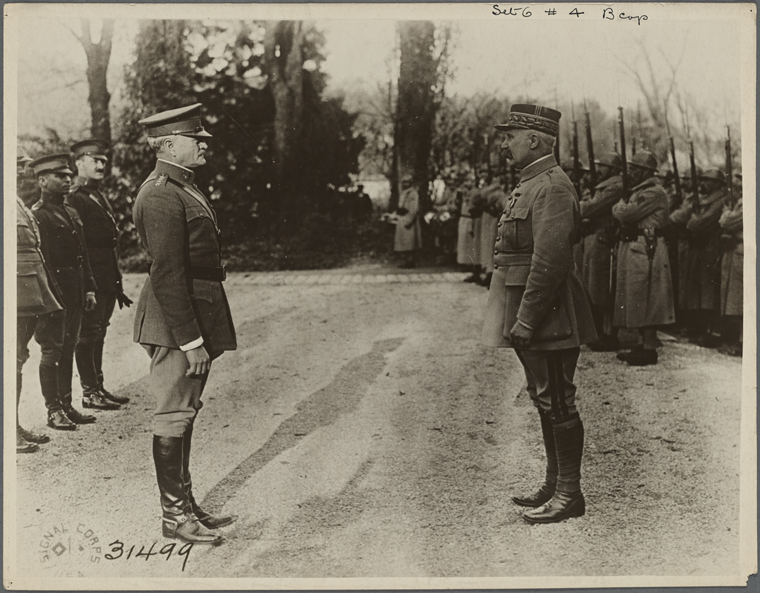When Pershing brought the A.E.F. to France, he was adamant about it fighting as an American army, not as reinforcements for the British and French. The American divisions were scattered throughout the Western Front to train with the British and French. The French commanding general, Gen. Petain, hoped that they would be used to plug holes in the Allied front. Pershing was totally against this idea, fearing the new, fresh American doughboys would be used as cannon fodder. The overall commander in chief, Marshal Foch, sided with Pershing and approved Pershing’s plan to use the American army against the St. Mihiel salient. However, by the time the offensive was to take place, the Germans had put a lot of pressure on the Western Front and the British and French were desperate for American reinforcements. At a tense meeting, Foch tried to talk Pershing into postponing St. Mihiel and allowing American divisions to aid in counterattacks by the Anglo-French. Pershing stood his ground in two hours of arguing. Later, he compromised by scaling down the offensive and agreeing to quickly switch to participating in the Meuse-Argonne Offensive. If I might add my opinion, Pershing was wrong on this. He pigheadedly stuck with his insistence on a separate army even though the situation had changed and the Allies were in real danger.

Gen. John Pershing and Marshal Ferdinand Foch
0 Comments